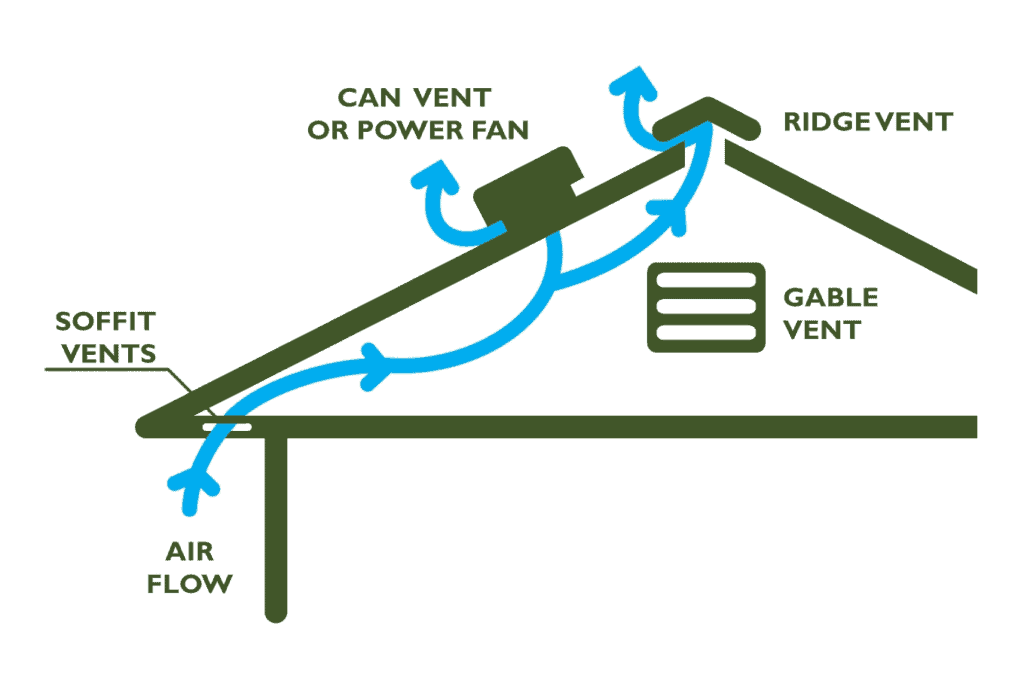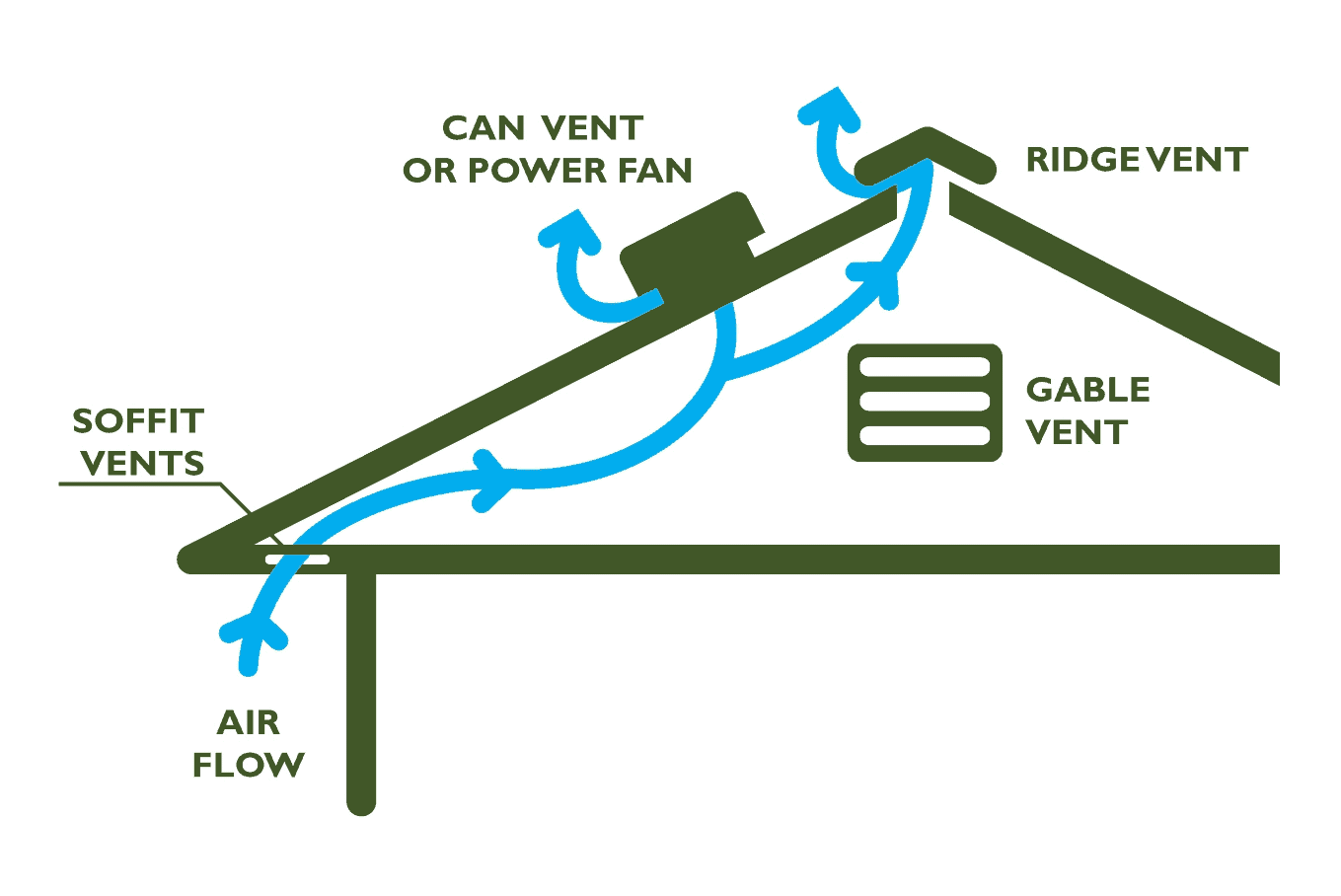Ensuring adequate attic ventilation is important to maintaining your roof and keeping mold out of your attic. But is there any way to know how much ventilation is enough? Can there be too much ventilation? Today, I wanted to share with you a few simple rules of thumb and answer common attic ventilation questions.
How much ventilation do I need?
The simple shortcut is to use this formula:
Attic square footage / 2 = Intake & Exhaust area in square inches
This might be confusing so let’s use an example:
Your attic is 1,200 square feet (length x width). You then divide by 2 to get 600 square inches of both intake and exhaust.
You need to learn another term, Net Free Area.
What is Net Free Area?
Net Free Area (NFA) describes the amount of space a vent has available for airflow. For example, if you have a screen on a window, the actual screen itself blocks some of the airflows, so the net free area helps you understand how much is blocked. A 2’x2’ screen may cover a 4 square feet opening, but only allow airflow through 80% of it, as an example, meaning air can only flow through 3.2 square feet instead of 4.
Manufacturers usually state the NFA of a vent, either intake or exhaust, so you can easily use their figure to determine how many vents you need.
In our example, we needed 600 square inches of intake. If an example of ridge vent provides 18 square inches per linear foot, we would then divide 600 by 18 to see how many pieces we’d need, which would be at least 34 pieces, which equates to 34 feet of ridge vent. This calculation can be performed for the intake as well.

Is it possible to over-ventilate?
This question is common – if my math calls for 34 feet of ridge vent, but I have 50 feet available, should I stop the ridge vent short? The answer here depends on the intake. If you can balance the intake with the exhaust, then it’s okay to provide the extra ridge venting. If the intake will not balance with the exhaust, consider a shorter ridge vent length.
Why is it important that the intake matches the exhaust?
The goal of a ventilation system in your attic is to reduce heat and moisture buildup in the summer and avoid ice damming in the winter. To achieve these goals, you need dry air to enter low and help push out warmer, moist air near the middle and top. Keeping the intake and exhaust balanced helps this airflow pattern to flow along the entire path of the roof, not missing any areas or causing an imbalance.
What if they cannot be balanced?
If you run into this situation, it is better to have more intake than exhaust. Excess intake will become exhausted on the downwind side of a house due to the pressure change from wind. If the attic has excess exhaust vents, it can cause the extra exhaust to pull the missing intake from itself, causing a ventilation short circuit or even pulling rain or snow into where you definitely don’t want it.
Ventilation does not have to be hard and I hope I’ve provided some of the basics for you to see if your attic ventilation measures up. Proper ventilation leads to a long-lasting roof and many saved headaches. If you want your attic ventilation checked out, be sure to call the Pros at 888-776-1998 or visit us online.

